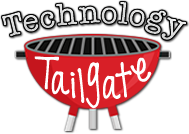People may approach this method of learning with various degrees of skepticism and uncertainty. One may ask:- What is online learning?
- Is online learning for me?
The above are valid questions and unlike traditional courses in which the student and instructor meet face-to-face once or several times a week, online learning is presented through the use of the Internet.
Some course are completely online (i.e. course syllabus, content , learning activities, resources, assignments tests) while others may be partially online (i.e. communicating online through email or discussion board).
Is Online Learning for You?
Online learning is not for everyone. Even if you are an excellent student, you may find that online classes are not compatible with your learning style. Learners who are visual and self-directed tend to do well with online learning. Lifestyles also play an important role to the success of online learning. The following questions may help you decide if online learning is for you
Do you have self discipline, motivation, and good time management skills?
Most of the online learning activities and communication are asynchronous, meaning that class members participate and complete their assignments at different times throughout the day and week. This makes it possible for one to do their class work when it's most convenient. However, with this increased freedom and flexibility comes responsibility. Without the structure of regular class meetings, it will be necessary to pace and keep up with assignments.
Are you able to commit time each day or week to your online course(s)?
Online courses often require at least as much, if not more time and commitment than traditional courses. Completing course assignments and other learning activities may take from five to fifteen hours or more per week. One may even find it necessary to log on almost every day. If you are interested in enrolling, be sure to set aside enough time to keep up with daily or weekly assignments.
Do you have good communication skills and enjoy expressing your ideas in writing?
With online courses, writing is the primary means of communication, so it is important that you feel comfortable expressing yourself in writing.
Do you feel comfortable discussing problems with your instructors?
If you are having problems with the technology or the course content, it will be necessary to inform your instructor as soon as possible. Without this feedback, your instructor will never know what is wrong. Remember that many of the nonverbal cues that one use in the classroom to show frustration, boredom, or confusion (such as a yawn or a look of bewilderment) are not possible in an online class.
Will you miss the experience of sitting in a classroom?
While the level of interaction can be very high in online courses, it is not the same face-to-face interaction. Some online students miss having the opportunity to see/listen to their instructor and classmates. If you feel that a traditional classroom is essential for learning, online classes may not be suitable for you.
Are you comfortable using computers?
The personal computer is the primary learning and communication tool in most online courses. You don't need to be a computer guru to succeed, but you do need to have some basic technology skills, such as word processing and using a Web browser. You will also need regular access to a computer with an Internet connection.
While there are many points to consider when making a decision about online learning, ultimately you are in the best position to know whether it fits your personal learning style and life style. If you have the right qualities to be a successful online student, you will probably find it to be a very convenient and rewarding alternative to traditional classroom learning.
I am a strong proponent of online education. I received my M.Ed. in Educational Technology online through the UT TeleCampus. Check it out! http://telecampus.utsystem.edu/catalog/programs/programinfo/med-edtech.aspx://
Check out the follow self-assessments sites:
Is Online for me? – Self Assessment
http://tinyurl.com/37yeb
Are you a procrastinator? Self help for procrastinator
http://tinyurl.com/2mnnu
Index of Learning Styles-Self Assessment
http://tinyurl.com/2uxem
 How can I use www.wordle.net in my classroom?
How can I use www.wordle.net in my classroom? 














